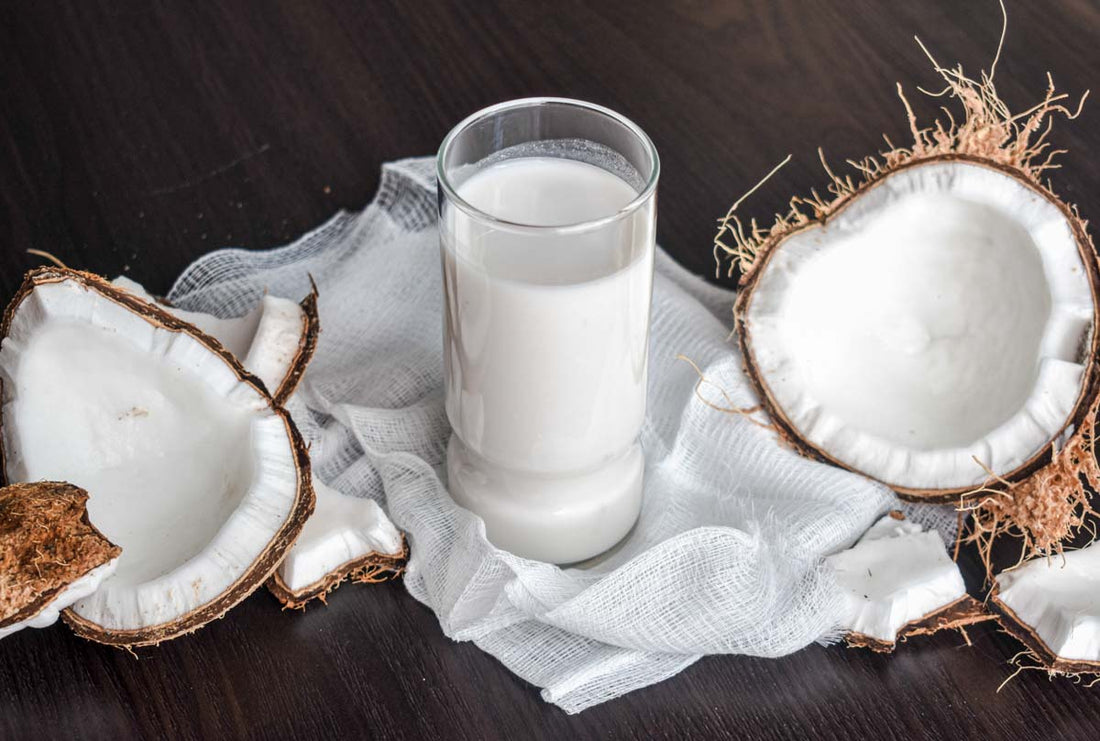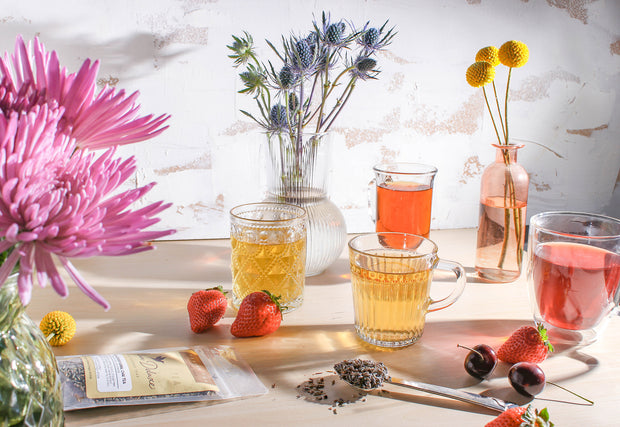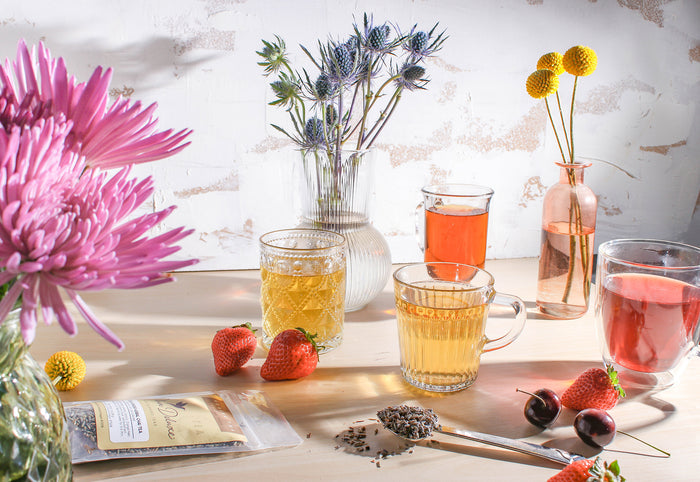Have you always had a soft spot for the delicate taste of a ripe coconut?
Looking for an alternative to traditional milk, without having to forgo the nutrients and flavor?
Coconut milk is a great option that brings to the table not only a variety of new flavor choices in today’s market but a great dairy-free choice that will leave you feeling like you didn’t have to sacrifice a thing! Here's how to use coconut milk in tea for a flavor you'll love.

How is Coconut Milk Made?
Once you can get through the hard, outer layer of coconut, you reach the juicy “meat” on the inside.
To make coconut milk, the meat has to go through a basic process to extract the milk from the flesh of the coconut. Once the flesh (or meat) is removed from the shell and grated, it is then mixed with hot water. The result? A rich, white liquid that is often canned and labeled as “coconut milk”.
This, however, is often not what is used when mixing in tea, lattes, or used as a dairy-free alternative to pouring a cup of milk over your cereal. Rather, the process continues and the rich, white liquid is further processed with the addition of more hot water to create a lighter version, where the cream and milk won’t separate. The finished version?
An opaque “milk” that's packed with the sweet, floral, nutty flavor of coconut.
This process is usually done in factories through mechanical extraction, but, if you are feeling super ambitious, it can be done manually as well.
Fun fact: the liquid found in a young coconut, is more unambiguously referred to as “coconut water” or “coconut juice”. In Malaysia and Indonesia, coconut milk is called "santan" and in the Philippines, it is called "gata."

Crazy for Coconuts: The Star of the Show
Are you already as crazy as I am about coconuts? Ready to use coconut milk in tea? What if I told you there’s even more to love? Like a wealth of health benefits?
Well, that’s exactly the case! Time to serve up a few of these delicious and nutritious tips first.
Coconut milk aids in weight loss because it is rich in triglycerides (healthy fats). This helps prolong the feeling of feeling full and helps to eat less.
Looking for that electrolyte hit? Coconut milk is rich in magnesium, phosphorous, and potassium. Magnesium helps with a healthy immune system as well as nerve and muscle function. Phosphorus helps keep those bones strong, and potassium is vital in healthy muscle functioning.
Has anyone ever recommended to you to take zinc when you’re starting to get a cold or fighting off an infection? There’s a reason for that.
Zinc helps your immune system function properly. What’s more, is that it aids in the renewal of the cells that line the walls of your intestines and this helps prevent harmful bacteria from entering the bloodstream. Coconut milk also contains lauric acid which is known for its antiseptic properties. Lots of win-wins here!
Coconut milk is packed with a punch as it’s full of vitamins E and C, both of which are well known for their antioxidant properties, which help fight free radicals. Iron is also found in coconut milk and is an important mineral in the formation of healthy red blood cells.
Pour yourself a cuppa and enjoy some coconut milk in tea today along with all of these added benefits!

How to Use Coconut Milk in Tea: A Delightful Alternative
Using coconut milk in tea is really quite simple and fun. You can choose to warm and/or froth your coconut milk before adding it to a hot tea, or if you prefer an iced tea or iced tea latte, simply pour it over your iced tea.
Ready for some fun inspiration?
Our Coco-Lavender herbal chai is a base of both rooibos and green rooibos tea, with our favorite melange of chai spices, real coconut, and fresh lavender. It’s heavenly warm, or great iced as well.
Since unsweetened coconut milk has a slightly sweet, floral, and nutty flavor, it’s a perfect pairing with this Coco-Lavender herbal chai. Did you know that in the plethora of grocery markets today, you can often even find chocolate or vanilla coconut milk? If sweetened coconut milk is what you prefer, there’s an option for that as well.
With no introduction needed, our Coconut A La Crème black tea pairs beautifully with coconut milk, as an added splash for some depth.
Looking for something a little more on the dessert side of things? Then look no further than our Banana Bread herbal tea as an accompaniment with coconut milk. It’s a blend of honeybush tea, cocoa nibs, cinnamon, apple pieces, calendula, and banana and chestnut essence.
If you’re looking for something new and fun to try, scoot on over to this article on how to make Thai tea from scratch. I’m always an encourager of kitchen adventures!
Enjoy!

![Spring Break Tea Variety Pack [6-Pack Variety of Flavors]](http://www.plumdeluxe.com/cdn/shop/files/spring-break-pack.jpg?v=1740682266&width=165)















